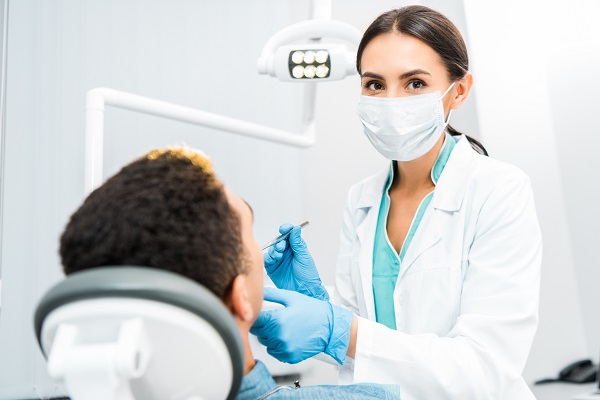Direct and indirect dental restoration are the two types of restorations available. When your teeth are broken, chipped, decayed or cracked, dental restoration procedures restore the teeth to their original state. The choice of the type of restoration depends on the nature and severity of the tooth problem.
Direct vs. indirect dental restorations
Read on to find out the main differences between direct and indirect dental restorations.
Direct dental restorations
Direct restorations are options that can be completed in a single procedure during a dental office visit. Tooth filling for cavities is the most common direct dental restoration procedure. The dentist will determine the right filling for the patient based on preferences and the position of the tooth within the mouth. Direct dental restorations are generally easy and straightforward, and they are used for correcting minor dental issues.
Indirect dental restorations
Indirect dental restorations entail multiple complex procedures to treat a dental problem. Therefore, these procedures usually require multiple appointments with a dentist. Common procedures in this category include crowns, veneers, bridges, dentures, implants, inlays and onlays. The patient may need to undergo x-ray scans and have their dental impression taken.
Indirect tooth restorations involve parts that are produced by a dental laboratory. The dental lab can be inside the dental office or offsite. It is the process of producing the required restoration that necessitates multiple trips to the dental office. As the patient waits for the completion of the dental restoration, the dentist will provide a temporary option to prevent further damage or dental problems.
When the patient's dental restoration is available, the dentist will affix it in place to complete the restoration procedure. With advancements in dental technology, including the use of CAD and CEREC® machines and 3D imaging, some dental restorations can now be completed in a single visit.
Choosing the right option
Both dental restoration options ensure patients get the required solution to their dental issues. Direct restorations are generally used when the patient's teeth are intact and in good enough condition to remain. Direct restorations sometimes require that a part of the tooth be trimmed off to create space for the restoration.
Indirect dental procedures are generally important for patients who have suffered extensive tooth decay or damage that may cause lost teeth. In some cases, a patient may need both direct and indirect dental restoration.
Practicing good oral hygiene and visiting the dentist regularly for checkups and cleaning can significantly reduce a person's need for dental restorations. Those who have not visited their dentist in a long time need to book an appointment as soon as possible. If the dentist detects dental issues early enough, the patient may not need a dental restoration and may be able to avoid complications that may result in extensive dental procedures.
Final note
If you have dental issues and need to undergo a dental restoration procedure, ensure you book an appointment with a dentist. The dental professional will evaluate your condition and determine whether direct or indirect restoration would be the best way to restore your smile.
Request an appointment here: https://www.elitedentistrynky.com or call Elite Family & Cosmetic Dentistry at (859) 384-2999 for an appointment in our Florence office.
Check out what others are saying about our services on Yelp: Read our Yelp reviews.
Related Posts
Orthodontic Treatment Can Make Daily Hygiene More Effective
Orthodontic treatment refers to a number of procedures and treatments; however, when it comes to more effective oral hygiene, most dentists say that it can improve with the help of teeth straightening …
Adjusting to New Dentures: When You Should Replace Your Old Dentures
Adjusting to new dentures is a familiar feeling to the 36 million Americans that have no teeth, according to the American Dental Association (ADA). Dentures allow those Americans to eat and speak …
What to Expect After Implant Restoration
Implant restoration is a transformative dental procedure that restores function, aesthetics, and confidence by replacing missing teeth with durable, natural-looking implants. While the results are long-lasting, understanding the recovery process and proper …
Dental Deep Cleaning Aftercare
In need of a dental deep cleaning and wondering what to expect? General dentistry focuses on ensuring patients' mouths are healthy, which includes deep cleanings. Knowing what to do before and after …







